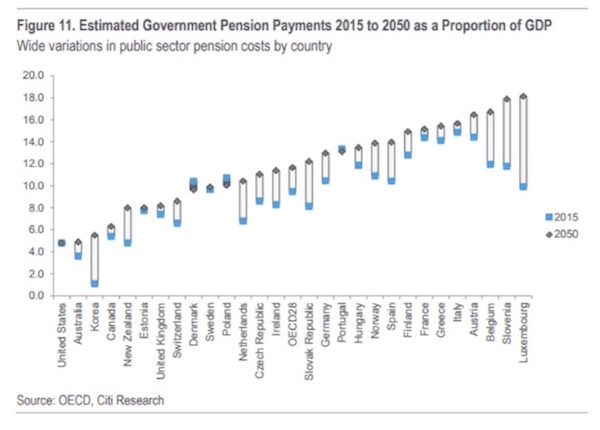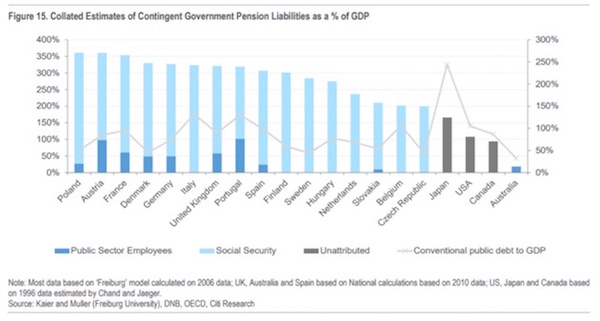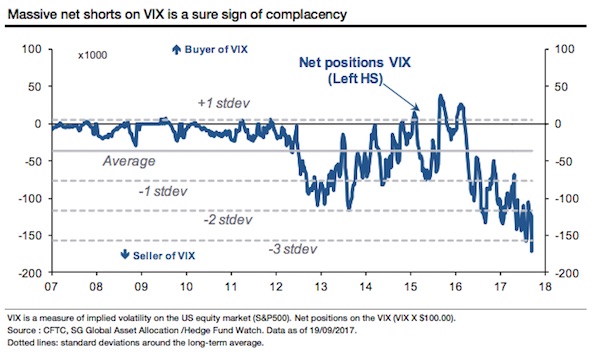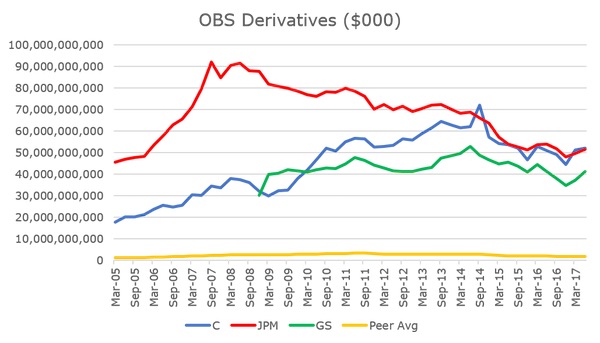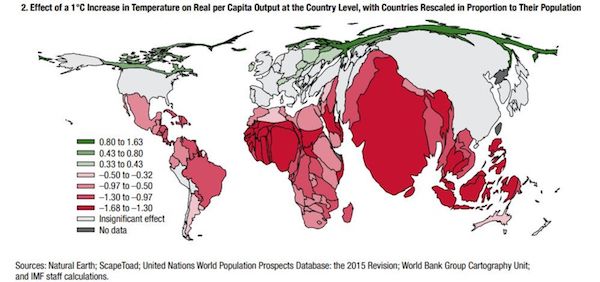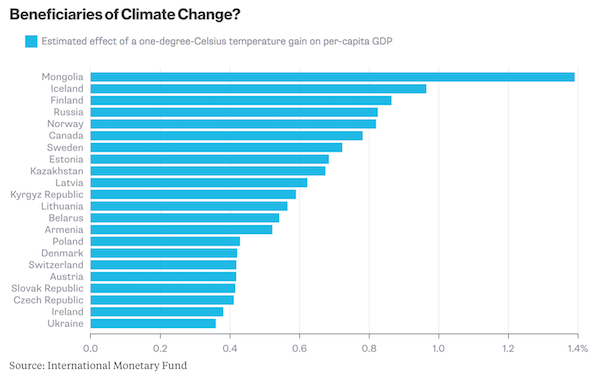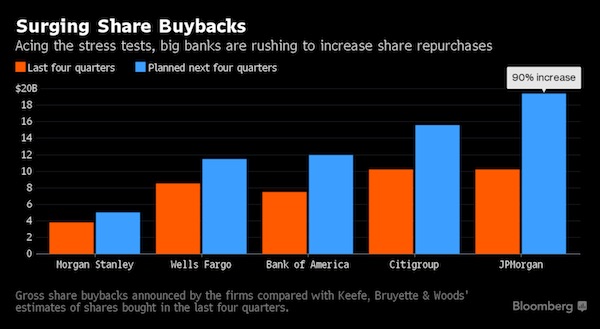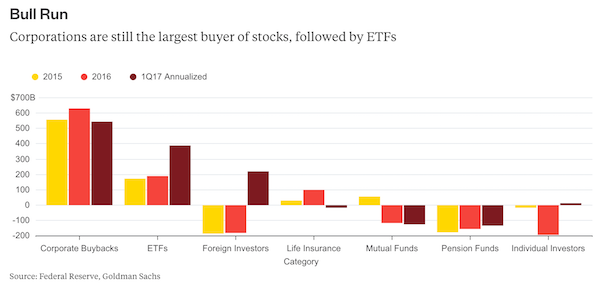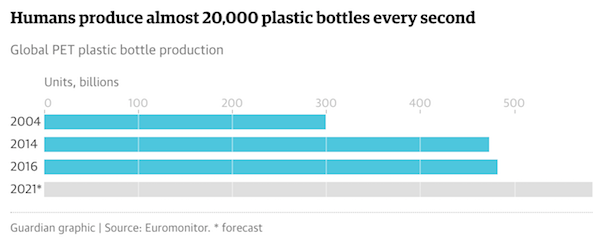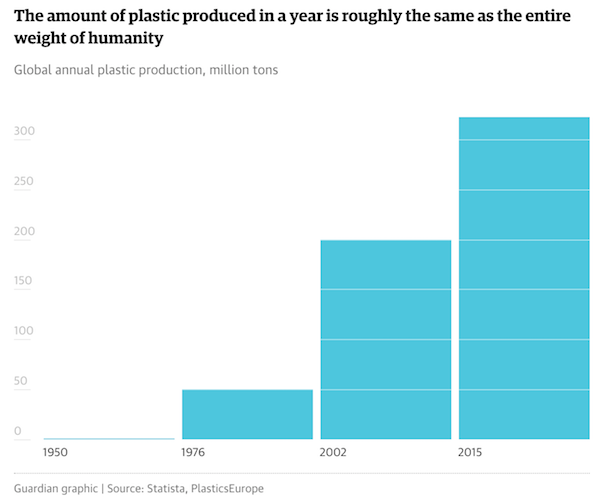
Caravaggio Adoration of the Shepherds 1609

Krakatau in 1883 is the stuff of legend. It affected climate all over the world.
“When the Krakatoa volcano in Indonesia erupted in 1883, the resulting debris caused vibrant red sunsets around the world for up to three years afterward.”
It also killed 30,000+. But it was still much weaker than Tambora in 1811, also Indonesia, which killed over 70,000.
• Krakatau-Triggered Tsunami Kills At Least 168 In Indonesia (R.)
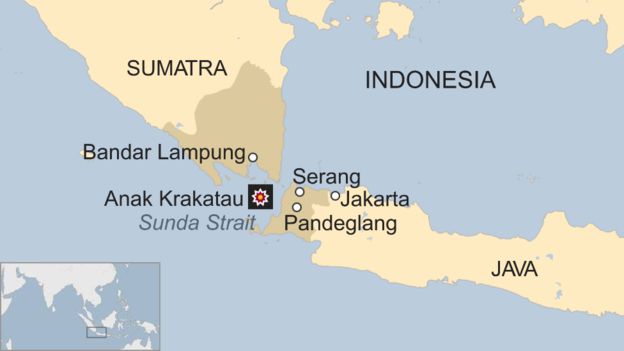
A tsunami killed at least 168 people and injured hundreds on the Indonesian islands of Java and Sumatra following an underwater landslide believed caused by the erupting Anak Krakatau volcano, officials and media said on Sunday. Hundreds of homes and other buildings were “heavily damaged” when the tsunami struck along the rim of the Sunda Strait late on Saturday, Sutopo Purwo Nugroho, spokesman for the disaster mitigation agency, said. Thousands of residents were forced to evacuate to higher ground. There was no estimate on the number of missing. TV images showed the seconds when the tsunami hit the beach and residential areas in Pandeglang on Java island, dragging with it victims, debris, and large chunks of wood and metal.
The eruption of Krakatau in 1883 killed more than 36,000 people in a series of tsunamis. Anak Krakatau is the island that emerged from the area once occupied by Krakatau, which was destroyed in 1883. It first appeared in 1927 and has been growing ever since. Saturday’s tsunami was the latest in a series of tragedies that have struck Indonesia, a vast archipelago, this year. Successive earthquakes flattened parts of the tourist island of Lombok, and a double quake-and-tsunami killed thousands on Sulawesi island. Nearly 200 people died when a Lion Air passenger plane crashed into the Java Sea in October.
Authorities warned residents and tourists in coastal areas around the Sunda Strait to stay away from beaches and a high-tide warning remained in place through till Dec. 25. “Those who have evacuated, please do not return yet,” said Rahmat Triyono, an official at the Meteorology, Climatology and Geophysics Agency (BMKG). President Joko Widodo, who is running for re-election in April, said on Twitter that he had “ordered all relevant government agencies to immediately take emergency response steps, find victims and care for the injured”.
Breaking News: Deadly tsunami strikes Indonesia after volcanic eruption. @weathernetwork #Tsunami pic.twitter.com/o7ZREkUVO4
— Amanda Weldon (@WeldonAmanda) December 23, 2018

Dave Collum still produces his endless end of the year reviews, and he’s still a good friend and avid reader of the Automatic Earth. Even though Twitter sort of shadow banned him from my feed.
• David Collum’s 2018 Year In Review: “The Year Everything Changed”
Sources I sit in front of a computer 16 hours a day gerrymandering my brain, at least three of which are dedicated to non-chemistry pursuits. I’m a huge fan of Adam Taggart and Chris Martenson (Peak Prosperity), Tony Greer (TG Macro), Doug Noland (Credit Bubble Bulletin), The Automatic Earth, Grant Williams (Real Vision and Things That Make You Go Hmmm), Raoul Pal (Real Vision), Bill Fleckenstein (Fleckenstein Capital), Mike Krieger (Liberty Blitzkrieg), Demetri Kofinas (Hidden Forces), James Grant (Grant’s Interest Rate Observer), Campus Reform, and any nonsense spewed by Twitter legend @RudyHavenstein.
There are so many others, many of whom I consider friends that I am simply waiting to meet. ZeroHedge is by far my preferred consolidator of news; it’s an acquired taste and requires a filter, but I think those rogues are great. Twitter is a window to the world if managed correctly—especially for a chemist attempting to connect with the finance world. Warning: the Holy Grail of maximizing follower counts is an illusion; it produces a counterproductive hyperconnectivity that makes extracting signal from noise difficult. So much flow, so little time.

The half of British who don’t want Brexit have no-one to speak for them. That is a volatile situation. And potentially explosive.
• Corbyn Faces Furious Labour Backlash Over Backing Brexit (G.)
Jeremy Corbyn is facing a storm of criticism from Labour activists and MPs after suggesting he would press ahead with Brexit if the party won a snap general election. In a sign that he is losing backing among overwhelmingly pro-Remain Labour supporters, Corbyn was also accused of betraying the party membership by appearing reluctant to back the idea of supporting Remain in a second referendum. The first signs of a serious internal revolt from party members on the left, who helped propel him to the leadership, came after Corbyn gave an interview to the Guardian in which he suggested he thought Brexit should go ahead and said EU state-aid rules would prevent a Labour government intervening to support UK industries.
His anti-EU tone drew immediate criticism from party supporters and members who had successfully persuaded the leadership to back the possibility of a second referendum at Labour’s annual conference in Liverpool in September. Richard Brooks, a Labour member, activist and co-founder of For our Future’s Sake (FFS), a pro-Remain youth and student-led organisation, said Corbyn risked losing the backing of young people as well as the mass Labour membership he had promised to empower. “Jeremy Corbyn is in danger of betraying and losing the support of millions of young people and students who very nearly propelled him to Downing Street last year, and whose support he needs if he is to ever to become prime minister.
“Students and young people will not forget or forgive politicians who sell them down the river by backing a Brexit that limits our life opportunities and makes us poorer,” he said.

Because there’s nothing that cannot be bought.
• UK To Tackle Loneliness Crisis With £11.5m Cash Injection (G.)
A coffee caravan in rural Suffolk, furniture restoration projects for men and organised rambles for the recently bereaved are among more than a hundred initiatives being backed with a £11.5m fund to tackle Britain’s epidemic of loneliness. One hundred and twenty-six projects have been chosen to receive up to £100,000 each in the first ever government-backed fund to tackle a problem that the prime minister, Theresa May, described as “incredibly damaging to our humanity” when she launched a national loneliness strategy in October. The projects will target a wide range of groups from isolated Pakistani women in Bradford to young LGBTQ+ in Bristol and lonely elderly men in Cornwall.
The government believes the health impact of loneliness is on a par with obesity and smoking. It says loneliness is associated with a greater risk of smoking, coronary heart disease and stroke as well as an increased risk of depression, low self-esteem, sleep problems and Alzheimer’s disease. Mims Davies, the minister for loneliness, said: “I am committed to encouraging open conversations around this sensitive topic to reduce the stigma and create an environment where everyone is better connected.”
Rural Coffee Caravan in Suffolk will buy a new camper van that will travel to quiet villages in the East Anglian countryside and set up temporary cafes. It is also using the money to extend an initiative that involves pubs giving out free coffee on Monday mornings. “Loneliness is just so damaging,” said Ann Osborn, its director. “Lonely people are more likely to have problems with obesity, have heart disease and suffer from depression. But also they cut themselves off and so the community suffers.

Well, truth is gone from the media already…
• If Truth Cannot Prevail Over Material Agendas We Are Doomed (PCR)
Throughout the long Cold War Stephen Cohen, professor of Russian studies at Princeton University and New York University was a voice of reason. He refused to allow his patriotism to blind him to Washington’s contribution to the confict and to criticize only the Soviet contribution. Cohen’s interest was not to blame the enemy but to work toward a mutual understanding that would remove the threat of nuclear war. Although a Democrat and left-leaning, Cohen would have been at home in the Reagan administration, as Reagan’s first priority was to end the Cold War. I know this because I was part of the effort. Pat Buchanan will tell you the same thing.
[..] Today Cohen is stressed that it is the United States that thinks it can win a nuclear war. Washington speaks openly of using “low yield” nuclear weapons, and intentionally forecloses any peace negotiations with Russia with a propaganda campaign against Russia of demonization, villification, and transparant lies, while installing missile bases on Russia’s borders and while talking of incorporating former parts of Russia into NATO. In his just published book, War With Russia?, which I highly recommend, Cohen makes a convincing case that Washington is asking for war.
I agree with Cohen that if Russia is a threat it is only because the US is threatening Russia. The stupidity of the policy toward Russia is creating a Russian threat. Putin keeps emphasizing this. To paraphrase Putin: “You are making Russia a threat by declaring us to be one, by discarding facts and substituting orchestrated opinions that your propagandistic media establish as fact via endless repetition.” Cohen is correct that during the Cold War every US president worked to defuse tensions, especially Republican ones. Since the Clinton regime every US president has worked to create tensions. What explains this dangerous change in approach?

One little rumor can last an entire Christmas season.
• Mnuchin Refutes Report That Trump Wants Powell Fired (MW)
President Donald Trump, reportedly angry over the U.S. central bank’s decision to raise interest rates last week, has talked about ousting Federal Reserve Chairman Jerome Powell, according to Bloomberg News. The report, based on “four people familiar with the matter,” said they were not convinced Trump would move against Powell, but that the president’s ire remained elevated over rising interest rates. Rates are climbing at the same time that the stock market has wiped out 2018 gains. In a Saturday evening tweet, Treasury Secretary Steven Mnuchin said he has spoken with the president and Trump said, “I totally disagree with Fed policy. I think the increasing of interest rates and the shrinking of the Fed portfolio is an absolute terrible thing to do at this time especially in light of my major trade negotiations which are ongoing, but I never suggested firing Chairman Jay Powell, nor do I believe I have the right to do so.”
On Friday, Trump’s economic team split publicly over the Fed. Trump’s trade adviser Peter Navarro told a Japanese newspaper that “we” — presumably meaning the White House — didn’t want to see any more interest-rate hikes from the central bank. The Fed has penciled in two rate hikes for 2019. Navarro said that would be “two too many.” “We don’t understand why the Fed is acting so contractionary at a time when there’s no inflation to worry about,” he said. White House chief economist Kevin Hassett said he disagreed with Navarro. “That’s Peter speaking for himself,” Hassett insisted. “I think the appropriate position for an economist in the White House is to respect the independence of the Fed and not comment on their policies,” Hassett said.

Is Trump finally getting the chutzpah to implement his promises?
• Trump’s Political Viagra (Jatras)
After two years of getting rolled by the Washington establishment, it seems that President Donald Trump woke up and suddenly realized, “Hey – I’m the president! I have the legal authority to do stuff!” • He has announced his order to withdraw US troops from Syria. • His Defense Secretary James Mattis has resigned. There are rumors National Security Adviser John Bolton may go too. (Please take Secretary of State Mike Pompeo with you!) • He announced a start to withdrawing from Afghanistan. • He now says he will veto a government funding bill unless he gets $5 billion for his Wall, and as of 12:01 AM Washington time December 22 the federal government is officially under partial shutdown.
All of this should be taken with a big grain of salt. While this week’s assertiveness perhaps provides further proof that Trump’s impulses are right, it doesn’t mean he can implement them. The Syria withdrawal will be difficult. The entire establishment, including the otherwise pro-Trump talking heads on Fox News, are dead set against him – except for Tucker Carlson and Laura Ingraham. Senator Lindsey Graham is demanding hearings on how to block the Syria pullout. Congress hardly ever quibbles with a president’s putting troops into a country, where the Legislative Branch has legitimate Constitutional power. But if a president under his absolute command authority wants to pull them out – even someplace where they’re deployed illegally, as in Syria – well hold on just a minute!
We are being told our getting out of Syria and Afghanistan will be a huge “gift” to Russia and Iran. Worse, it is being compared to Barack Obama’s “premature” withdrawal from Iraq (falsely pointed to as the cause of the rise of ISIS) and will set the stage for “chaos.” By that standard, we can never leave anywhere. This will be a critical time for the Trump presidency. (And if God is really on his side, he soon might get another Supreme Court pick.) If he can get the machinery of the Executive Branch to implement his decision to withdraw from Syria, and if he can pick a replacement to General Mattis who actually agrees with Trump’s views, we might start getting the America First policy Trump ran on in 2016.

Wait, we do? Matt sounds a bit confused here.
• We Know How Trump’s War Game Ends (Taibbi)
So we’re withdrawing troops from the Middle East. GOOD! What’s the War on Terror death count by now, a half-million? How much have we spent, $5 trillion? Five-and-a-half? For that cost, we’ve destabilized the region to the point of abject chaos, inspired millions of Muslims to hate us, and torn up the Geneva Convention and half the Constitution in pursuit of policies like torture, kidnapping, assassination-by-robot and warrantless detention. It will be difficult for each of us to even begin to part with our share of honor in those achievements. This must be why all those talking heads on TV are going crazy.
Unless Donald Trump decides to reverse his decision to begin withdrawals from Syria and Afghanistan, cable news for the next few weeks is going to be one long Scanners marathon of exploding heads. “Today’s decision would cheer Moscow, ISIS, and Iran!” yelped Nicole Wallace, former George W. Bush communications director. “Maybe Trump will bring Republicans and Democrats together,” said Bill Kristol, on MSNBC, that “liberal” channel that somehow seems to be populated round the clock by ex-neocons and Pentagon dropouts. Kristol, who has rarely ever been in the ballpark of right about anything — he once told us Iraq was going to be a “two month war” — might actually be correct.
Trump’s decisions on Syria and Afghanistan will lay bare the real distinctions in American politics. Political power in this country is not divided between right and left, and not even between rich and poor. The real line is between a war party, and everyone else. This is why Kristol is probably right. The Democrats’ plan until now was probably to impeach Trump in the House using at minimum some material from the Michael Cohen case involving campaign-finance violations.

“Like all members of the military profession I never had an original thought until I left the service. My mental faculties remained in suspended animation..”
• Send the Mad Dog to the Corporate Kennel (McGovern)
Outgoing Defense Secretary Gen. James “Mad Dog” Mattis was famous for quipping, “It’s fun to shoot some people.” It remains a supreme irony that Mattis was widely considered the only “adult in the room” in the Trump administration. Compared to whom? John Bolton, the rabid neocon serving as national security adviser? That would be the epitome of “condemning with faint praise.” [..] Mattis was simply incapable of acknowledging the self-destructive, mindless nature of U.S. “endless war” in the Middle East, which candidate-Trump had correctly called “stupid.” In his resignation letter, Mattis also peddled the usual cant about the indispensable nation’s aggression being good for the world.
Mattis was an obstacle to Trump’s desire to pull troops out of Syria and Afghanistan (and remains in position to spike Trump’s orders). Granted, the abrupt way Trump announced his apparently one-man decision was equally stupid. But withdrawal of ground troops is supremely sane, and Mattis was and is a large problem. And, for good or ill, Trump — not Mattis — was elected president. Historically, Marines are the last place to turn for sound advice. Marine Gen. Smedley Butler (1881-1940), twice winner of the Medal of Honor, was brutally candid about this, after he paused long enough to realize, and write, “War is a Racket”: “I suspected I was just part of a racket at the time. Now I am sure of it. Like all members of the military profession I never had an original thought until I left the service. My mental faculties remained in suspended animation while I obeyed the orders of the higher- ups. …”

Next up are ports in Chesapeake Bay?
• Is China Getting Too Close To Israel? (ATimes)
China is constructing seaports at two sites where the US 6th Fleet deploys, in Haifa next to Israel’s main naval base and Ashdod near Tel Aviv, prompting concerns about China’s military potential in the Mediterranean Sea and Middle East. “The civilian [Chinese] port in Haifa abuts the exit route from the adjacent [Israeli] navy base, where the Israeli submarine fleet is stationed and which, according to foreign media reports, maintains a second-strike capability to launch nuclear missiles,” Israel’s Haaretz media reported. “No one in Israel thought about the strategic ramifications,” Haaretz said in September. The guided-missile destroyer USS Arleigh Burke visited Haifa on October 25 in support of the 6th Fleet which is headquartered in Naples, Italy.
Shanghai International Port Group (SIPG) signed the Haifa contract in 2015, began construction in June, and is to operate the Bayport Terminal for 25 years starting from 2021. SIPG signed memorandums of understanding with U.S. ports in Seattle, Washington in 2006 and Georgia Ports Authority in 2004, plus Barcelona, Spain, in 2006. SIPG also works with European ports in Rotterdam, Hamburg and London, and two ports in Japan, its website said. China Harbor Engineering, one of China’s biggest government-owned enterprises, is meanwhile constructing a port at Ashdod, 25 miles (40 kilometers) south of Tel Aviv.
“At $3 billion, this is one of the biggest overseas investment projects in Israel, ever, and also one of the biggest for the Chinese company, China Harbor Engineering,” wrote Arthur Herman, senior fellow at the Washington-based Hudson Institute think tank in November. “Ashdod on the Mediterranean coast is the destination of fully 90 percent of Israel’s international maritime traffic,” Herman said.



